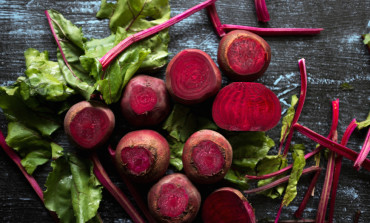
In this piece, renowned cardiologist Dr. Joel Kahn shares what you need to know about your endothelium for optimal health. If you’re interested in learning more, check out his mindbodygreen class, Everyday Hacks for Long-Lasting Health: How to Eat, Move & Live for Longevity.
The joys of distant memories. In fifth grade, I was overweight and ran the slowest 50-yard dash ever recorded at Stevenson Elementary School. I was also fond of pointing to exposed skin and saying “your epithelium is showing,” years before I knew I was headed for a career in medicine. Fortunately, I had a few good traits, too, and I didn’t alienate everyone that year (including a cute classmate that I have been married to for over 35 years).
The epithelium is one of the four basic types of tissues in the body (along with connective tissues, muscles, and nerves) that lines all organs, inside and out. I am now a serious student of a specific kind of epithelium, the endothelium, that lines the 50,000 miles of arteries and 50,000 miles of veins that course through our bodies. Just one cell layer thin, our endothelium would cover eight tennis courts in area if it were stretched out and weighs as much as our liver. Here’s what you need to know about your endothelium, how it relates to your overall health—and what we can do to maintain a healthy endothelium:
What does our endothelium do?
In 1998, researchers were awarded a Nobel Prize in medicine when they discovered some of the inner secrets of the endothelium. Once thought to be just a “wallpaper” between blood and the wall of our arteries, the endothelium is now understood to be the key to living a long and healthy life.
The cells are thin and yet very active, making hormones, permitting the passage of messaging chemicals, and maintaining proper blood vessel function. One of the key molecules made by our endothelium is nitric oxide (NO), which, when identified, was the reason the Nobel Prize was awarded. One of the surest signs of health is generous NO production, and the converse is true of many common diseases, including diabetes mellitus. Some of the key functions of a healthy endothelium are:
- Prevention of inappropriate blood clotting
- Relaxation of arteries, promoting normal blood pressure
- Prevention of inflammation and plaques
- Smooth blood flow to deliver nutrients for cell metabolism
- Facilitation of glucose uptake and healthy blood sugars
What harms our endothelium?
All the classic risk factors for early heart and artery damage such as smoking, elevated blood sugar (pre-diabetes and diabetes), obesity, high blood pressure, and high blood cholesterol (particularly oxidized LDL cholesterol, which I measure in my clinic), can damage our endothelium.
Foods such as processed meals high in fat also quickly damage our endothelium. Some additional factors that directly damage our endothelium are elevated homocysteine levels and hs-CRP inflammatory particles, which can also be measured.
How do we know if our endothelium is healthy?
If you smoke, are obese, suffer high blood pressure or high cholesterol, have diabetes mellitus, or have erectile dysfunction, you likely have endothelial dysfunction (ED).
However, it’s also now possible to directly measure the health of the endothelium. A blood test for ADMA is available. The higher the ADMA level, the lower the NO production and the more ED is present. When we heal our ED, the ADMA level drops as NO production is boosted. A device called the EndoPAT is also used to measure ED and monitor interventions to document recovery.
How can we boost our endothelial function?
We all want a healthy endothelium for wellness, longevity, optimal fitness, sexual responsiveness, and heart attack and stroke prevention. Maintaining a healthy weight, avoiding smoking, and practicing vitamin “L” habits are key.
Certain foods can also boost the production of NO and reverse ED to power our health. These are foods with rich concentrations of L-arginine, including:
- Spinach, both green and red, kale, bok choy
- Rhubarb
- Beets
- Watermelon, including the rind
- Nuts, particularly pine nuts
- Greens, particularly arugula
- Whole grains like oats and wheat germ
- Garlic and onions
Another path is to use polyphenol-rich foods or functional foods to boost the enzyme that makes NO, called eNOS, to enhance NO production. Apples and grapes have high concentrations of these molecules and have been shown to boost exercise duration. Many foods are rich in polyphenols and have profound benefits when included in our diet.
The playground in fifth grade is a distant memory—but the irony of life is that I now spend my days telling patients in my clinic that their “endothelium” is showing. It’s not as simple as seeing an exposed belly button, and I have to use advanced labs and sophisticated machines, but the stakes are much higher. The rewards are higher, too, with reports of improvements in blood pressure, sexual performance, and overall energy using natural medicine. I’m also quite sure I could whip my former self in a 50-yard dash. Bring it on.
Originally posted on MindBodyGreen.com

